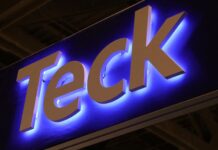
GLENCORE has unveiled plans to slash $1bn in costs by the end of 2026 following a comprehensive review of its mines and smelters, the company said on Wednesday.
The cost-cutting initiative comes as the miner grapples with lower prices for key commodities, particularly coal — traditionally its biggest earner — and record-low metal processing fees affecting its refining operations.
The company reported a 26% decline in first-half copper production to 343,900 tons, primarily attributed to declining ore grades, though it maintained its full-year copper forecast for 2025 at between 850,000 and 890,000 tons.
Glencore CEO Gary Nagle said the review “recognised opportunities to streamline our industrial operating structure, to optimise departmental management and reporting, and to support enhanced technical excellence and operational focus.”
The company has not detailed how the cost reductions will be achieved, with further updates expected when financial results are announced next week.
Glencore’s unique position as both a large producer and third-party trader of metals and minerals distinguishes it from rivals who typically focus on one business area.
However, this dual model faces pressure as the industry confronts lower prices for profitable commodities including iron ore and coal. Other major miners are also pursuing cost-cutting measures, with Anglo American already implementing reductions and Rio Tinto’s new CEO tasked with streamlining operations.
As part of its restructuring efforts, Glencore confirmed it will shutter its final two copper mines at Mount Isa in Australia, marking the end of its copper operations in the region.
Despite mining pressures, Glencore raised its long-term trading division profit forecast for the first time since 2017, revising earnings before interest and taxes to between $2.3bn and $3.5bn from the previous $2.2bn to $3.2bn range. This adjustment reflects expansion into new markets including lithium and liquefied natural gas, alongside “inflationary progression to today’s dollars,” it said.
The trading unit delivered first-half profits of $1.35bn, consistently exceeding previous forecasts.
Glencore had resisted updating guidance until now, arguing that pandemic impacts and the Ukraine conflict had temporarily inflated earnings before markets normalised, Bloomberg News reported.
Rival Trafigura noted earlier this year that trading had “reached a new cruising altitude” above pre-pandemic profitability levels, the newswire said.
Glencore also reported strong cobalt production of 18,900 tons in the first half, representing a 19% increase year-on-year, reinforcing its position as the world’s second-largest cobalt producer.










